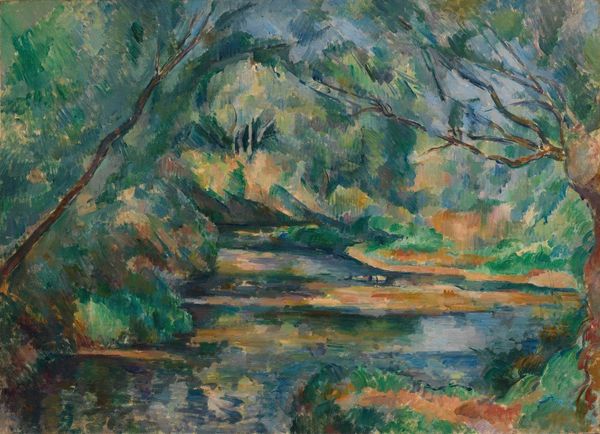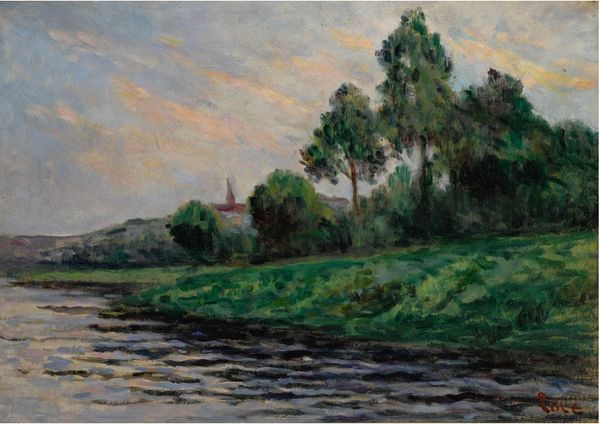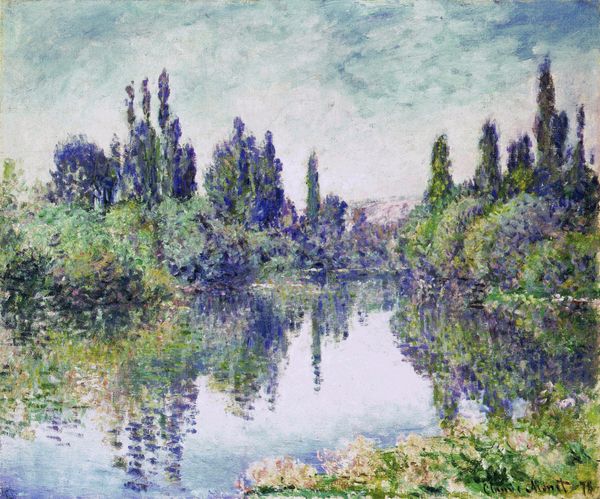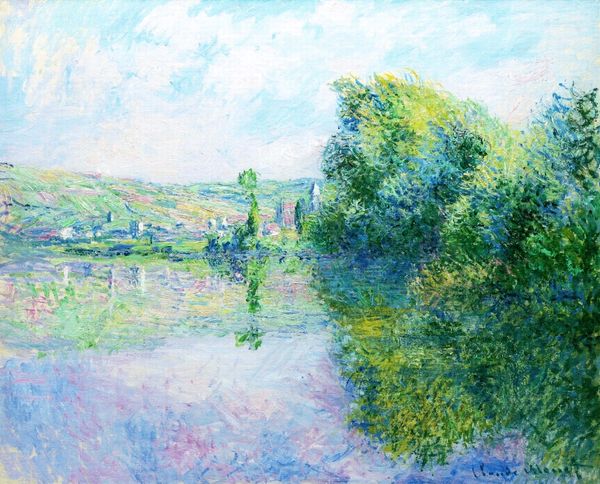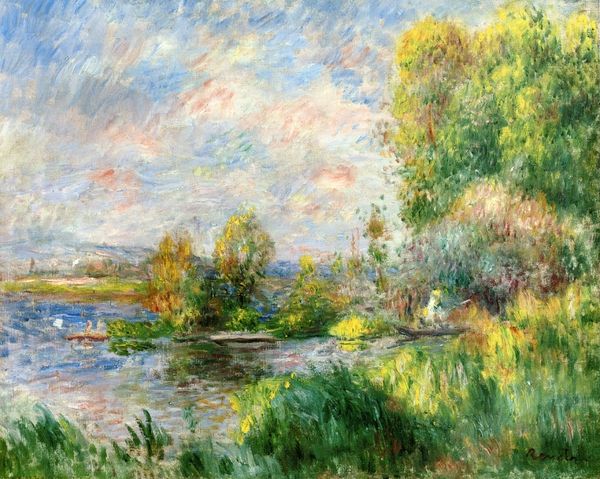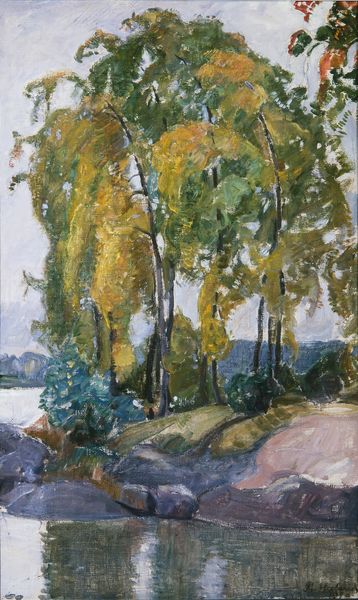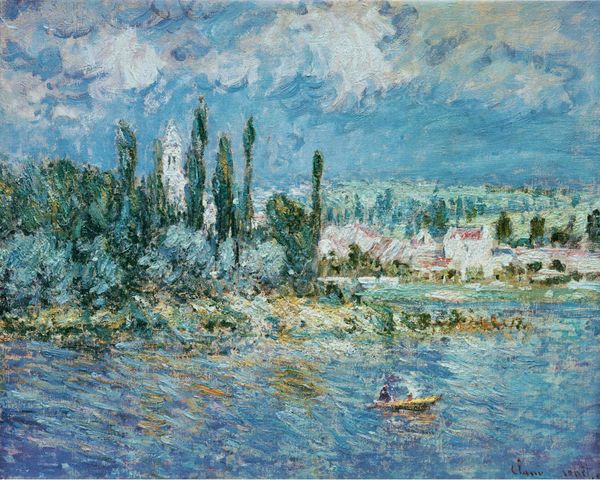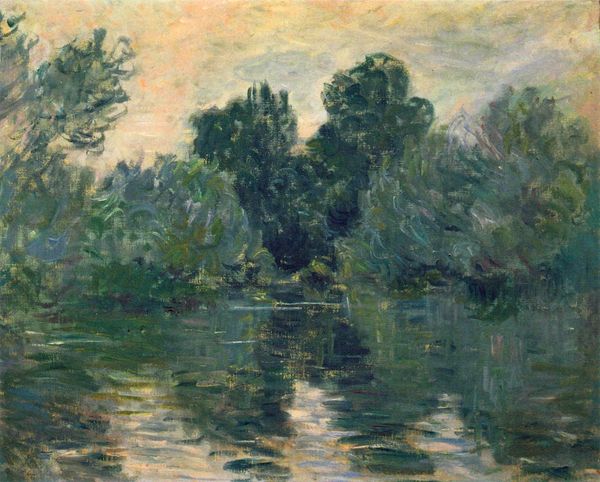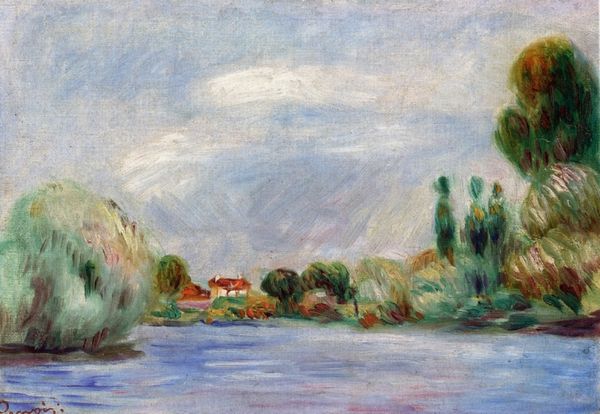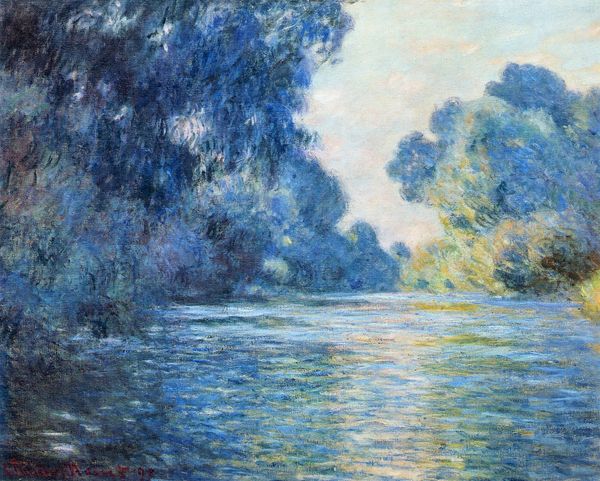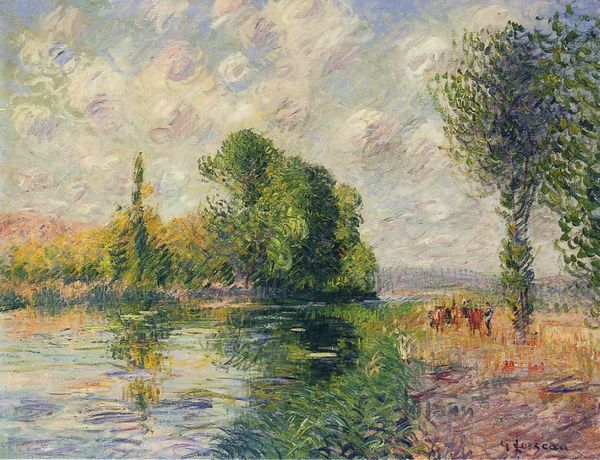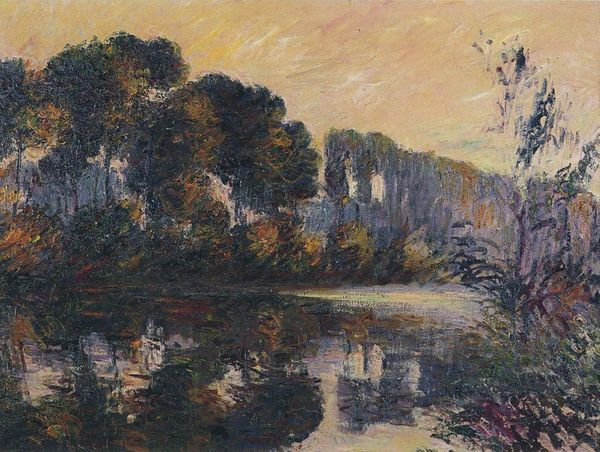
painting, oil-paint
#
painting
#
impressionism
#
oil-paint
#
landscape
#
oil painting
#
post-impressionism
Copyright: Public Domain: Artvee
Editor: So, here we have Cézanne's "Banks of the Seine at Médan," created sometime between 1885 and 1890 using oil paints. I'm really struck by how… unresolved it feels. It’s like a memory, a hazy day translated onto canvas. What stands out to you when you look at this painting? Curator: Hazy is a wonderful word for it! It's that very "unfinished" quality that pulls me in. Cézanne wasn’t after photographic realism, was he? He's breaking down what he *sees* into planes of color, almost like puzzle pieces fitting together to create a reality that's both there and not there, you know? It feels…truthful, in a strange way. What do you make of the reflections in the water? Editor: They’re so loose, almost abstract! I guess I expected something a little sharper, especially considering he was painting the Seine. Did he do that intentionally? Curator: I think absolutely! That blurring – it makes us question what's real and what’s just a fleeting impression, doesn't it? Look how the greens and oranges are mirrored, but somehow…different. It feels like he's searching for the essence of the riverbank, not just copying it. He's practically building the scene before our eyes, brick by pigmented brick. Editor: I see what you mean. It's less about the scene itself and more about his *experience* of the scene. Curator: Exactly! It makes me think, doesn't the truest reflection come from how we ourselves interpret and represent reality, rather than a mirror image? I’ll be pondering that today. Editor: Absolutely. I thought this was simply a blurry landscape but now it seems much deeper, even philosophical, perhaps.
Comments
No comments
Be the first to comment and join the conversation on the ultimate creative platform.
